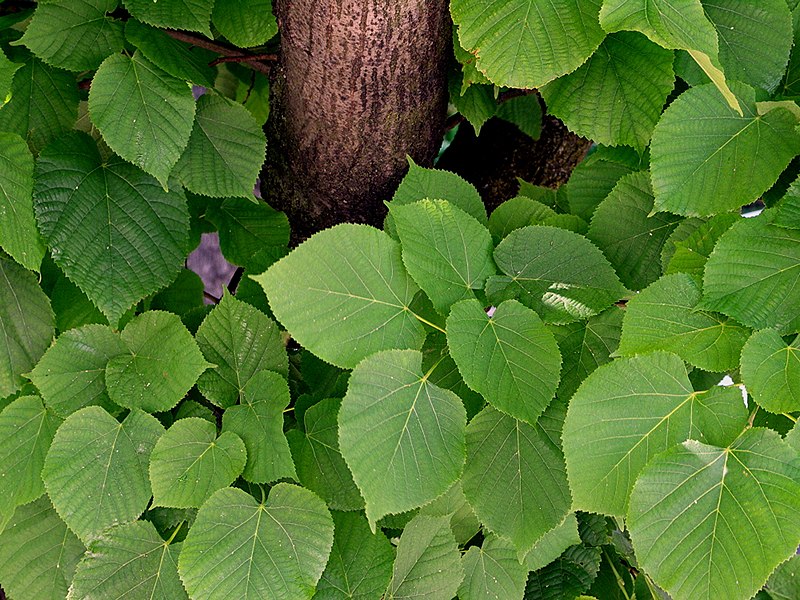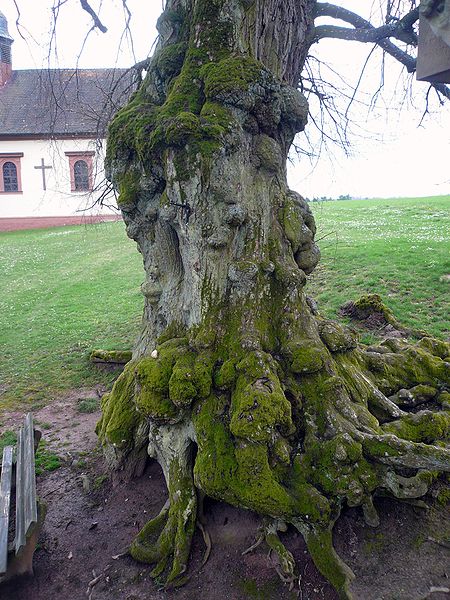For the past several blog posts, I've been writing about little known herbs
like rue, borage, and vervain.
And in the course of my research,
I came upon something I vaguely knew of but hadn't seen articulated before:
the concept of the herb tree.
Herb trees are trees whose bark, berries, seeds, flowers, or leaves
have a history of being used medicinally.
There are several herb trees described by Amy Jeanroy,
the herb gardens guide for about.com.
So for these remaining days of August,
I thought it would be interesting to write about
some of the herb trees in Jeanroy's list.
The first one is the linden tree.
Linden trees have a lovely flower
that has both culinary and medicinal uses:

www.frenchgardening.com
I fell in love with linden trees the first time I saw them;
my sister-in-law had a whole row of linden trees behind her house.
The leaves were full and round
and made a beautiful wall of green along the edge of her backyard.

www.en.wikipedia.org
Linden trees live for centuries, and the wikipedia site has some images of
ancient linden trees, like this one in Germany:

www.wikipedia.org
I love the gnarled old trunk partially covered in moss.
Other linden trees in Europe have been documented at 2,000 years old.
Linden flowers--sometimes called limeflowers--make a light-colored honey,
and a tea made from them is supposed to be good for coughs and colds,
skin inflammations and high blood pressure.

www.123rf.com
Margaret Grieve in her "A Modern Herbal" suggests
that bathing with linden flowers in the water
is a good antidote for hysteria.
I would suspect that any warm bath would be calming,
but maybe sweet-smelling yellow linden flowers
floating atop the water would exude some kind of soothing magic.
And maybe that's what makes herb trees so special:
they carry a little magic.
<>
And in the course of my research,
I came upon something I vaguely knew of but hadn't seen articulated before:
the concept of the herb tree.
Herb trees are trees whose bark, berries, seeds, flowers, or leaves
have a history of being used medicinally.
There are several herb trees described by Amy Jeanroy,
the herb gardens guide for about.com.
So for these remaining days of August,
I thought it would be interesting to write about
some of the herb trees in Jeanroy's list.
The first one is the linden tree.
Linden trees have a lovely flower
that has both culinary and medicinal uses:

www.frenchgardening.com
I fell in love with linden trees the first time I saw them;
my sister-in-law had a whole row of linden trees behind her house.
The leaves were full and round
and made a beautiful wall of green along the edge of her backyard.

www.en.wikipedia.org
Linden trees live for centuries, and the wikipedia site has some images of
ancient linden trees, like this one in Germany:

www.wikipedia.org
I love the gnarled old trunk partially covered in moss.
Other linden trees in Europe have been documented at 2,000 years old.
Linden flowers--sometimes called limeflowers--make a light-colored honey,
and a tea made from them is supposed to be good for coughs and colds,
skin inflammations and high blood pressure.

www.123rf.com
Margaret Grieve in her "A Modern Herbal" suggests
that bathing with linden flowers in the water
is a good antidote for hysteria.
I would suspect that any warm bath would be calming,
but maybe sweet-smelling yellow linden flowers
floating atop the water would exude some kind of soothing magic.
And maybe that's what makes herb trees so special:
they carry a little magic.
<>
No comments:
Post a Comment